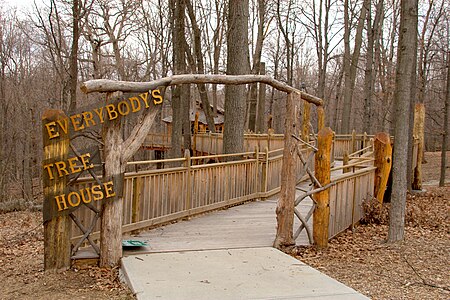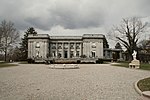Mount Airy Forest
Buildings and structures in CincinnatiCivilian Conservation Corps in OhioForests of OhioHistory of CincinnatiNational Register of Historic Places in Hamilton County, Ohio ... and 3 more
Parks in CincinnatiProtected areas of Hamilton County, OhioReforestation

The Mount Airy Forest, in Cincinnati, Ohio, was established in 1911. It was one of the earliest, if not the first, urban reforestation project in the United States. With nearly 1,500 acres (6.1 km2), it's the largest park in Cincinnati's park system.
Excerpt from the Wikipedia article Mount Airy Forest (License: CC BY-SA 3.0, Authors, Images).Mount Airy Forest
Colerain Avenue, Cincinnati Mount Airy
Geographical coordinates (GPS) Address Nearby Places Show on map
Geographical coordinates (GPS)
| Latitude | Longitude |
|---|---|
| N 39.179683333333 ° | E -84.566011111111 ° |
Address
Colerain Avenue 5001
45223 Cincinnati, Mount Airy
Ohio, United States
Open on Google Maps









